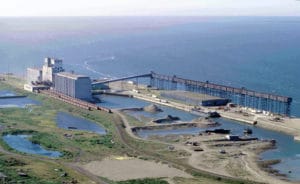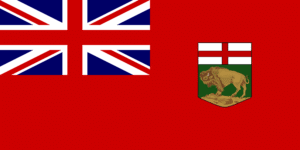
Manitoba has two Class I railways: Canadian National Railway (CN) and Canadian Pacific Railway (CPR). Winnipeg is centrally located on the main lines of both carriers, and both maintain large inter-modal terminals in the city. CN and CPR operate a combined 1,516 miles of track in Manitoba. Via Rail offers transcontinental and Northern Manitoba passenger service from Winnipeg’s Union Station. Numerous small regional and short-line railways also run trains within Manitoba: the Hudson Bay Railway, the Southern Manitoba Railway, Burlington Northern Santa Fe Manitoba, Greater Winnipeg Water District Railway, and Central Manitoba Railway. Together, these smaller lines operate approximately 1,775 1,103 miles of track in the province.
Winnipeg James Armstrong Richardson International Airport, Manitoba’s largest airport, is one of only a few 24-hour unrestricted airports in Canada and is part of the National Airports System. A new, larger terminal opened in October 2011. The airport handles approximately 430,000,000 lb of cargo annually, making it the third largest cargo airport in the country.
Eleven regional passenger airlines and nine smaller and charter carriers operate out of the airport, as well as eleven air cargo carriers and seven freight forwarders. Winnipeg is a major sorting facility for both FedEx and Purolator, and receives daily trans-border service from UPS. Air Canada Cargo and Cargojet Airways use the airport as a major hub for national traffic.

The Port of Churchill, owned by Arctic Gateway Group, is the only Arctic deep-water port in Canada. It is nautically closer to ports in Northern Europe and Russia than any other port in Canada. It has four deep-sea berths for the loading and unloading of grain, general cargo and tanker vessels. The port is served by the Hudson Bay Railway (also owned by Arctic Gateway Group). Grain represented 90 percent of the port’s traffic in the 2004 shipping season. In that year, over 600,000 tonnes of agricultural products were shipped through the port.
Flag of Manitoba:
The flag of Manitoba is a variation of the Red Ensign which bears the shield of the provincial coat of arms.

This flag was approved by the passage of a bill in the Manitoba Legislative Assembly on May 11, 1965 and was officially proclaimed on May 12, 1966. Queen Elizabeth II gave permission for the use of the Union device the preceding year (October 1965). The decision to adopt the flag was made after the federal government decided to replace the Canadian Red Ensign with the Maple Leaf flag, which was quite controversial at the time. The Manitoban flag, intentionally designed to resemble the Canadian red ensign, was seen as a way of preserving heritage that some felt was lost when the national flag was changed. The flag of Ontario was adopted under similar circumstances.
